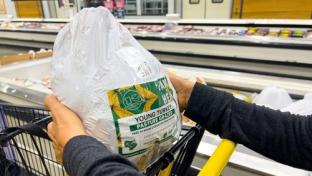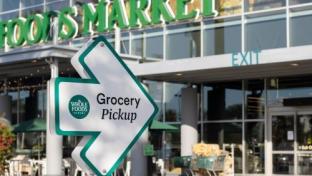A New Frugalism?

Ever adept at adapting, consumers are finding new ways to manage their budgets and meet their household needs. That’s a key takeaway from Circana’s latest food and beverage landscape report.
According the Chicago-based insights firm (formerly IRI and The NPD Group), volume is declining as inflation remains elevated, but people are not consuming less. Instead, they are getting more creative and, one might contend, frugal about what they are buying and using. Indeed, 94% of respondents said they are concerned about food inflation and 84% are making one or more changes to adjust, like looking for sales and cutting back on non-essentials.
Joan Driggs, VP, content and thought leadership at Circana, told Progressive Grocer in a recent interview that there are notable nuances in the latest data that account for the volume-consumption disconnect. “Some of it can be explained with trade-down behavior. We know, for example, that private label sales are up, especially in areas like meat and produce where private label has always done well. But people are also really looking for deals,” she noted.
More mindful habits are also taking place in home kitchens. “People are trying to eat through what they have,” Driggs said. To that point, 41% of respondents said they are more conscious of using up fresh foods before they go bad and additional 39% use leftovers more often.
Just as eating on-hand food mirrors interest in both value and sustainability by way of reducing food waste, other trade-down/trade-around behaviors reflect different current macro drivers. “Because there is more demand for convenience, with a lot of us back to work and resuming busy lifestyles, people are taking leftovers from home for lunch,” Driggs said.
[Read more: “Consumers Ditch From-Scratch Shopping for Easy Meal Solutions”]
On top of that, at-home cooks are keeping their pantries more streamlined as their schedules get busier and they prioritize the bottom line. “I found it interesting that there are fewer ingredients being used because people just want it (meal prep) to be easier and take less time. In some sense, shopping is becoming more European-style, in that we don’t want to have too much,” she observed, adding that the average kitchen has 10 fewer items than two years ago.
The latest form of frugality also shows up in the proverbial teeter-totter between at-home and away-from-home meals. “People continue to make more meals from home – they see how much they are saving,” Driggs pointed out. According to Circana's latest data, retail unit volume may be declining but is still higher than pre-pandemic levels, while foodservice volume is rebounding but in a fragmented way. Today, 86% of meals are sourced from home and 14% from foodservice locations, compared to the from the pre-pandemic 84% home/16% foodservice split.
The full report from Circana is available online.







